Crunchy Dill Pickle Recipe
This page may contain affiliate links. More Information.
Finally, I have a crunchy dill pickle recipe!
No matter what dill pickle recipe you use, I highly recommend you use fresh-picked, small pickling cucumbers. I try for no bigger than my thumb. Anything too much bigger gets made into relish or bread and butter pickles.
I also recommend canning this dill pickle recipe in pints. Quarts must be processed longer, so they tend to get mushy (at least in my home canning pickles experience).
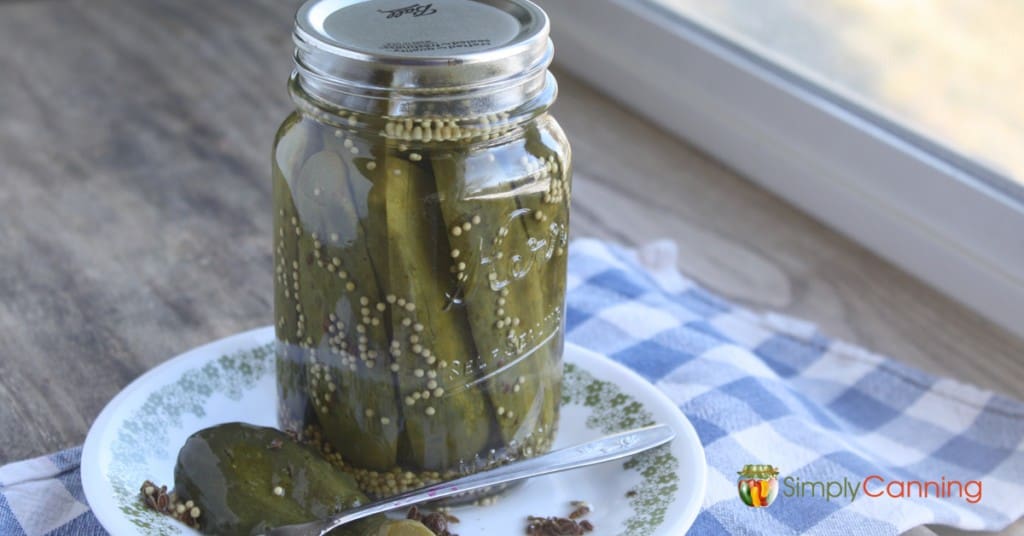
Label your jars with pretty printable Canning Labels! Check them out.
This Page Includes:
- Dill Pickle Recipe: Extended, Step-By-Step Directions
- Looking to Make the Best Dill Pickles? Try the Low-Temperature Process…
- Recipe Card
- {FAQ} How Long Do Dill Pickles Need to Cure or Set Before I Eat Them?
- {FAQ} How Long Will Homemade Pickles Keep Once I Open the Jar?
- {FAQ} Can I Reuse Brine that I Used for My Dill Pickles Previously?
- {FAQ} Why are My Pickles are Shriveled or Soft? Why Don’t My Homemade Pickles Look Nice?
- {FAQ} Slices vs. Whole Cucumbers
- {FAQ} Too Little Brine…
- {FAQ} What Makes Salty Pickles?
- {FAQ} What’s the White Film on the Bottom of a Jar of Pickles?
Dill Pickle Recipe: Extended, Step-By-Step Directions
The first part of this dill pickle recipe is done the day before you plan on canning. The pickles need to soak overnight in a brine, then the next day you will fill your jars and process.
Ingredients:
- 8 pounds of 3-4 inch pickling cucumbers
- 2 gallons water
- 1 1/4 cups canning or pickling salt
- 1 1/2 quarts vinegar (5% acidity)
- 1/4 cup sugar
- 2 quarts water
- 2 Tbsp. whole mixed pickling spice (I use a homemade recipe – click here.)
- whole mustard seed (1-2 tsp per pint jar)
- fresh dill (1 to 1 1/2 heads per pint jar) or dill seed (1 to 1 1/2 tsp. per pint jar)
- 1 garlic clove per jar (optional)
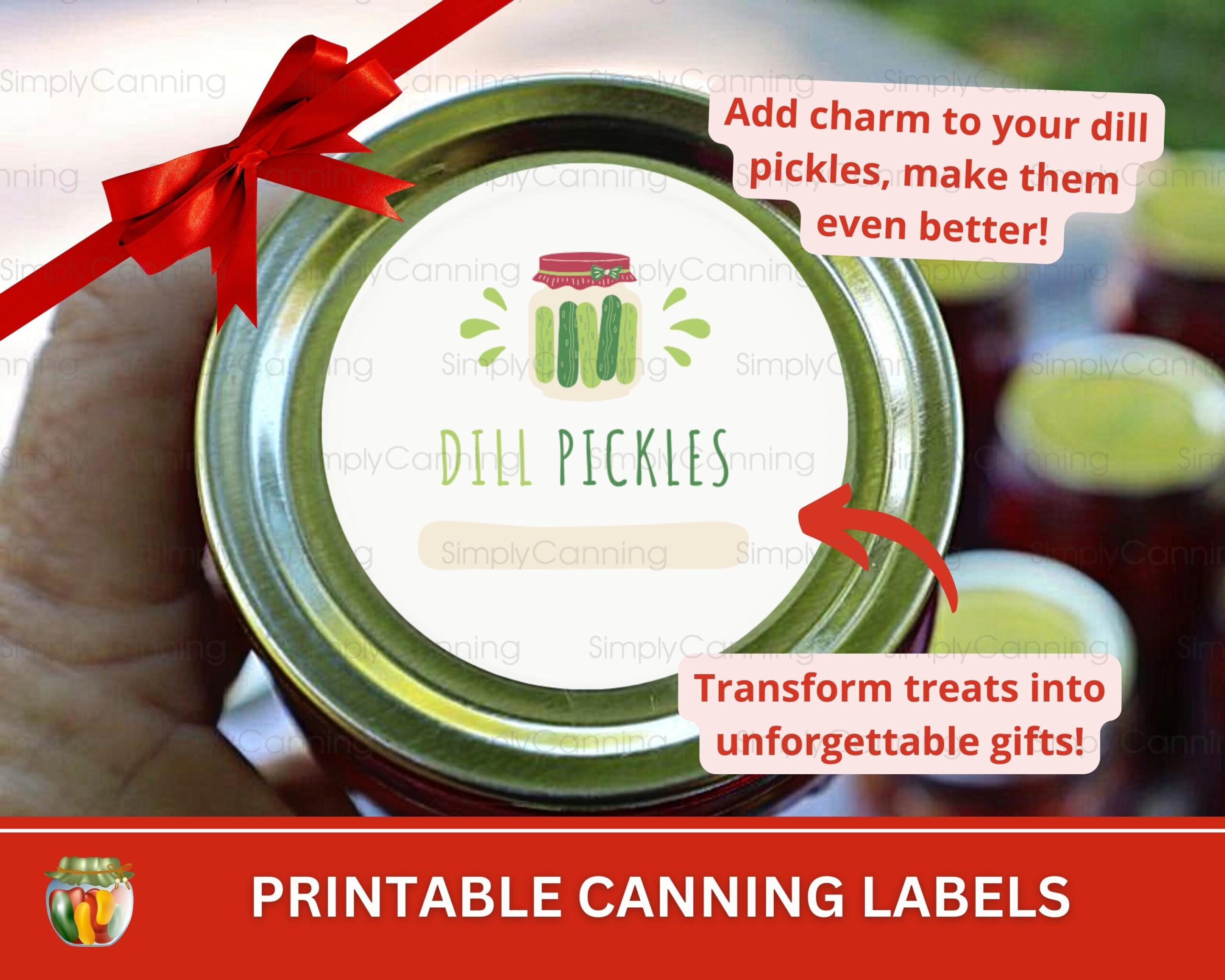
Dill Pickles Canning Labels
Preparing Your Cucumbers the Day Before
For this dill pickle recipe, on day one, wash your cucumbers and thinly slice off the blossom end. (The blossoms have an enzyme that will make your cucumber pickles soft.) The sooner you do this after picking, the better.
Add 3/4 cup salt dissolved in 2 gallons water. Soak cucumbers in water for 12 hours. Drain and get your canning supplies together.
Making & Canning Crunchy Pickles
Gather Canning Supplies for Your Dill Pickle Recipe:
- water bath canner
- canning jars
- canning seals and rings
- jar lifter
- canning funnel
- large pot
- bowls
- large spoons
- sharp knife
- towels and dish cloths
- pot or kettle for the brine
- ladle
- cheesecloth
Get the water in your canner heating while you prepare your cucumber pickles.
Combine vinegar, 1/2 cup salt, sugar, and 2 quarts of water. Place pickling spices in a cheesecloth bag and place in your vinegar brine. Heat to boiling.
Tip: I use my stainless steel teapot to make my brine, as it makes filling the jars super easy! For more tips and canning safety instructions, see Simply Canning…the book.
Fill jars with drained cucumbers.
Add:
- 1-2 tsp. mustard seed per pint
- 1 to 1 1/2 heads fresh dill or 1 to 1 1/2 tsp. dill seed per pint
- 1 garlic clove per jar (optional)
Fill jars with hot pickling brine, leaving a 1/2-inch headspace.
I’ve included dill pickle recipe directions below for both a regular hot water bath, and the low temperature process dill pickle recipe.
The timing for the two methods is different. Be sure you are using the correct time with the correct method for making this dill pickle recipe.
Hot Water Bath Processing
The processing time for this dill pickle recipe will vary according to your elevation. See chart below for your processing time. Read why altitude adjustments matter here.
Looking to Make the Best Dill Pickles? Try the Low Temperature Process…
This dill pickle recipe comes from the NCHFP website. It is safe for low temperature processing. If you are not familiar with low temperature pasteurization, please read this article. Then come back for processing directions.
Remember to use a thermometer and monitor your time carefully.
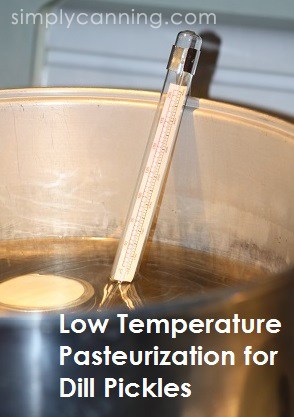
Have your canner ready and half full of warm water, about 120 to 140 degrees F. Also have a kettle or other pot of hot water ready.
Place your filled jars in the half-full canner. Now add hot water to 1 inch above the tops of the jars. Turn on your heat and warm water to 180 to 185 degrees. Use your thermometer and be sure this is maintained for 30 minutes. This is longer than the time indicated in the regular water bath processing.
When 30 minutes is complete, turn your heat off and remove your jars to a counter to cool. Check the seals after the jars are completely cooled off. I usually leave mine until the next day and check, label, and store them.
Pinnable Recipe Card
Dill Pickles Tips & FAQs
How Long Do Dill Pickles Need to Cure or Set Before I Eat Them?
I recommend allowing the pickles to set for at least a few weeks to a month, which is simply a flavor consideration.
How Long Will Homemade Pickles Keep Once I Open the Jar?
A jar of home-canned pickles should keep in the refrigerator for several months, but watch for signs of molding and spoilage. If you notice signs of spoilage, discard pickles immediately.
Can I Reuse Brine that I Used for My Dill Pickles Previously?
Brine that has been used in previously canned pickles shouldn’t be reused for canning again, though it can be used for making things like salad dressings, etc. Any leftover brine that hasn’t been canned may be covered and stored in the refrigerator for later, according to the National Center for Home Food Preservation.
Why are My Pickles are Shriveled or Soft? Why Don’t My Homemade Pickles Look Nice?
There are several things that can go wrong when you’re making pickles. You can view a table with common causes and possible solutions to problems here: https://nchfp.uga.edu/how/can_06/pickleproblems.html
Slices vs. Whole Cucumbers
Sharon,
For the Dill Pickles, it doesn’t mention slicing or halving or quartering the pickles, but in the picture it looks as if some of them have be sliced. Can you clarify? Thanks. Also, thanks for sharing with everyone!
Answer:
Good question. We prefer our cucumber pickles when they are small and whole, and I usually process bigger pickles into relish.
Sometimes I have room for one more jar in the canner. I don’t like running partial loads, so I’ll go ahead and quarter or halve some cucumbers that are a little bigger than we like. That way, I’m running a full batch of jars.
So either is fine. We prefer whole and small. 🙂
Too Little Brine…
I always seem to have less liquid than I should when I am canning even though I follow the directions carefully. For example, this last batch of dill pickles, I did not have enough liquid to fill all 7 jars within 1/2″. Is it safe to add water to top off the jars? Or should I just make fewer jars? ( I have always made fewer in the past)
Answer:
For something like pickles, you should make fewer jars or make more brine. If you add water, you will dilute the acidity of the pickles and this may be unsafe. Good question!
What Makes Salty Pickles?
by Alice
(Sidney NE USA)
What would cause my pickles to turn out very salty? It was suggested me to add my alum right in the jar as I put in the brine. Would this cause the saltiness?
Answer:
You know, I have not used alum when making my cucumber pickles, so I really could not say if this is what caused your problem. I’ll go ahead and post your question. Maybe someone with more experience could answer this for us.
I may just have to try alum though. I’m pickle challenged. Sometimes they are great, but sometimes not.
Salty Pickles
by: karen from canada
I use alum in the bottom of the jars all the time. 1/4 tsp per jar.
All the alum does is give the pickle its crunch. the problem is probably the water. Try a few pint jars for a batch using bottled water to see if it is the water.
Hope this helps. Maybe someone can help me. I make harvard beets and they go black, not the nice red I enjoy. What am i doing wrong?
too much salt
by: Sam
Made the mistake of doubling salt in the brine and dills are very salty. What can I do don’t want to throw them out.
unsalty pickles
by: Anonymous
My pickles were also very salty, did not want to throw them out! Dumped out one half of the brine and filled the jar up with regular water.
I put them back in the fridge and after a couple of days the excess salt had been pulled out of the cukes! And they were still crunchy
by Karen
I’ve been making bread and butter pickles for years. This year they turned out too salty. I think I let them sit too long in salt and didn’t rinse them enough prior to canning.
My question is can I drain off the brine and re- process them in a fresh batch of brine? Any ideas would be appreciated.
Answer:
I’m afraid if you reprocessed them you’d end up with overcooked, mushy pickles. What I’d do is just dump out the brine and soak them in water or maybe a very weak brine.
Then store them in the fridge. Do this one jar at a time as you use them up. As you open each jar, do the same.
I’ve not done this myself, but my research showed that others have done this with success. Be sure and mark the jars now so you won’t forget which ones were too salty.
It is worth a try. Let us know how it works.
Too salty pickles
by: Laurie
I know this might sound weird, but I recall that potatoes are the best way to remove salt out of salty things.
I have not done this, but I would try it with one jar just to see how it would work. Try peeling and slicing a few slices of potatoes. Add to jar and wait a day and do a taste test. Potatoes naturally will suck up the salt. Just a suggestion.
I have had salty pickles and tried taking out the brine, washing and rebrining and processing. BIG NO NO! I have also tried dumping brine and adding fresh brine and that worked.
I make Bread and Butter and it does not require soaking prior to processing.
Salty Brine
by: Mac
I just canned 6 pints using your Crunchy Dill recipe. I felt the brine was too salty. I processed them using your brine recipe anyway.
My question is… do you feel the brine is too salty and if so is it safe to reduce the amount of salt?
new to your site. very nice!
Mac
What’s the White Film on the Bottom of a Jar of Pickles?
by Joanne
(Canada)
Some of my fresh-pack dill pickles have a white film on the bottom of the jar (12 hours after processing). Also this white film seems to have attached itself to the mustard seed. Is this yeast? Bacteria? Anything to be concerned about?
It didn’t happen to all of the pickles in the batch, just 1/3 of the jars.
Answer:
As long as there are no other signs of spoilage, your cucumber pickles should be fine. I read in my Ball Blue Book that this is a “harmless” form of yeast or it could be additives in the salt that you used.
Be sure when you open the jar that there are no funny smells and that the seal was tight.
Related Pages
Corn Relish Recipe
Pickled corn is safe for water bath canning! Learn how to can this old-fashioned relish with fresh corn and vegetables here.
Bread & Butter Pickles
Easy to make, this recipe makes a great sweet pickle for munching, topping sandwiches, or adding to potato salad.
Pickle Recipes
Find recipes for pickling carrots, beets, peppers, and MORE!
Pin This to Find Later!
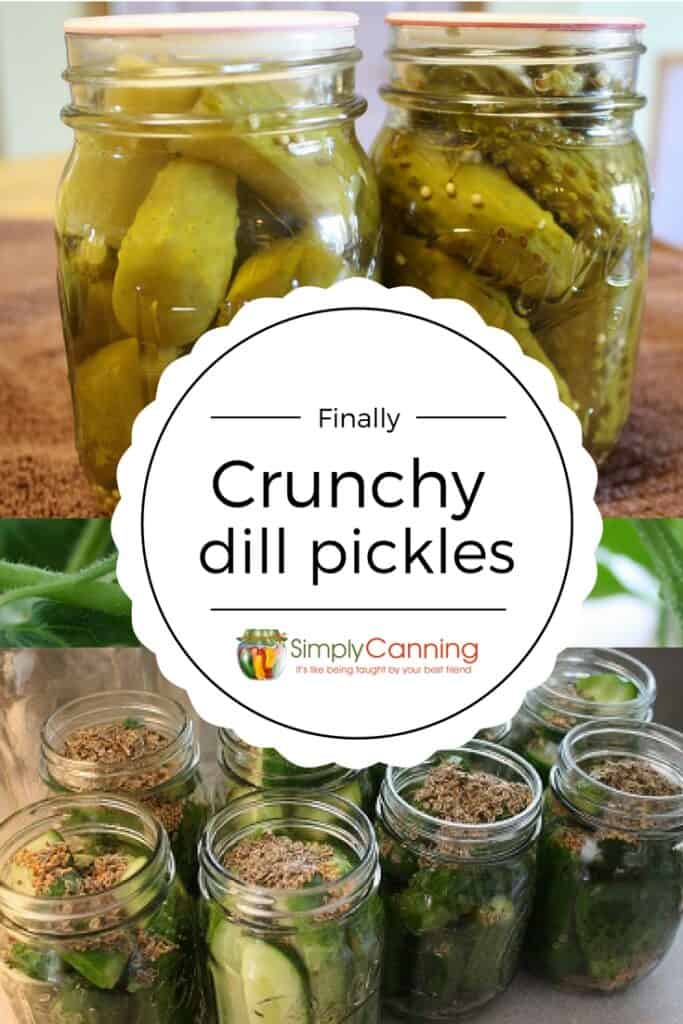
Source: The National Center for Home Food Preservation
Page Last Updated: 6/24/2021

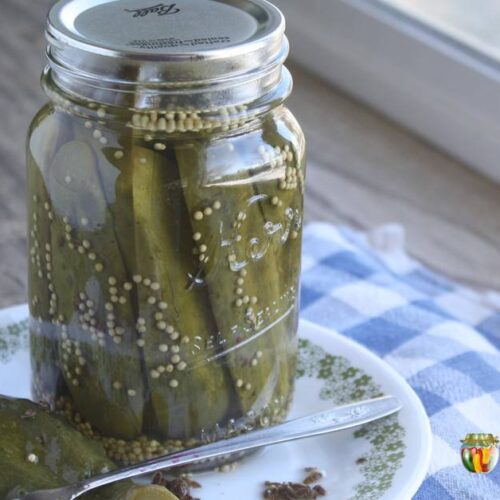
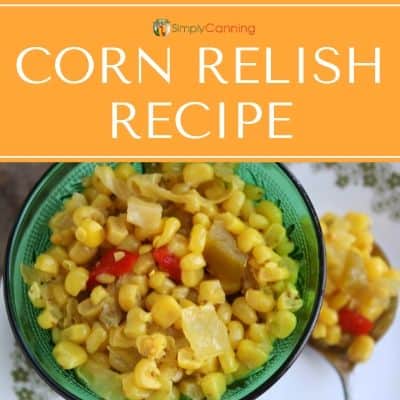
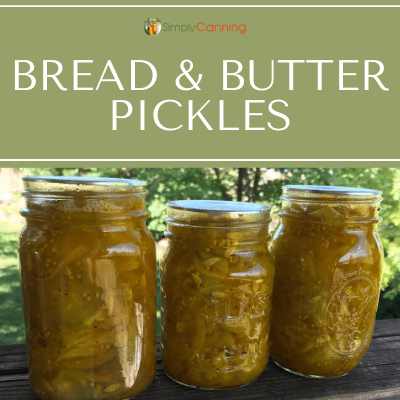
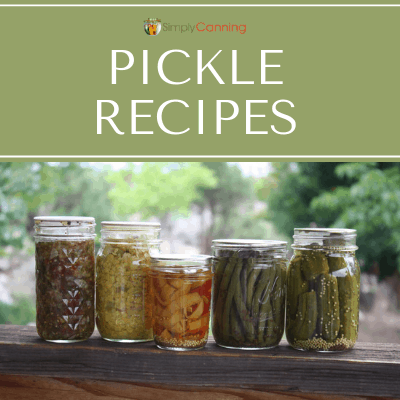
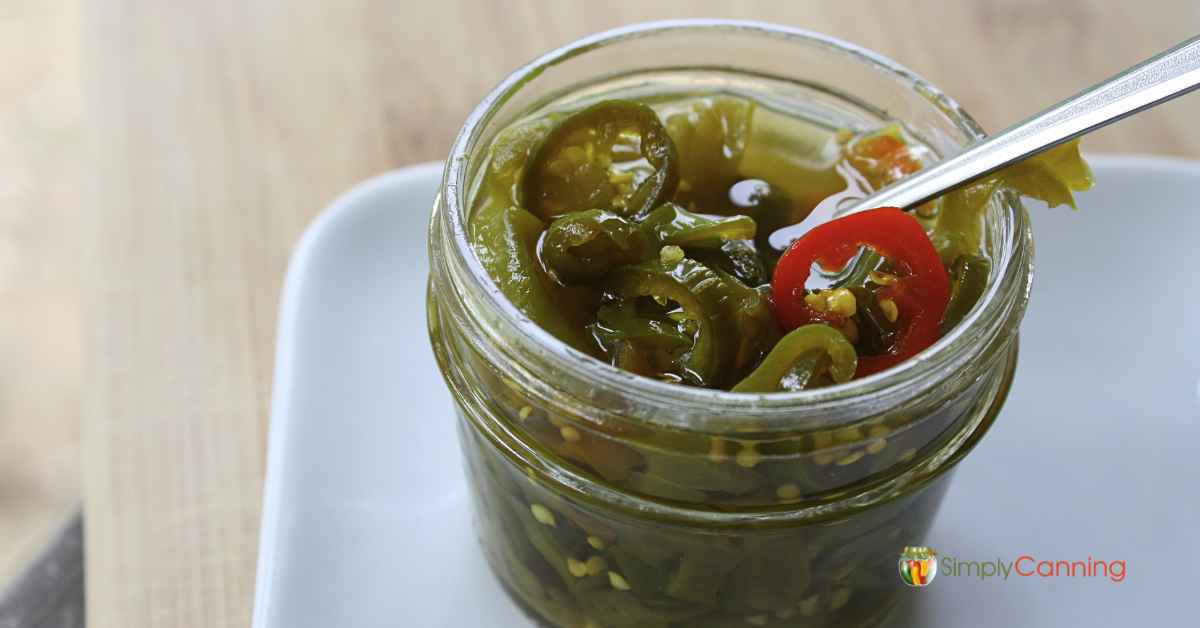
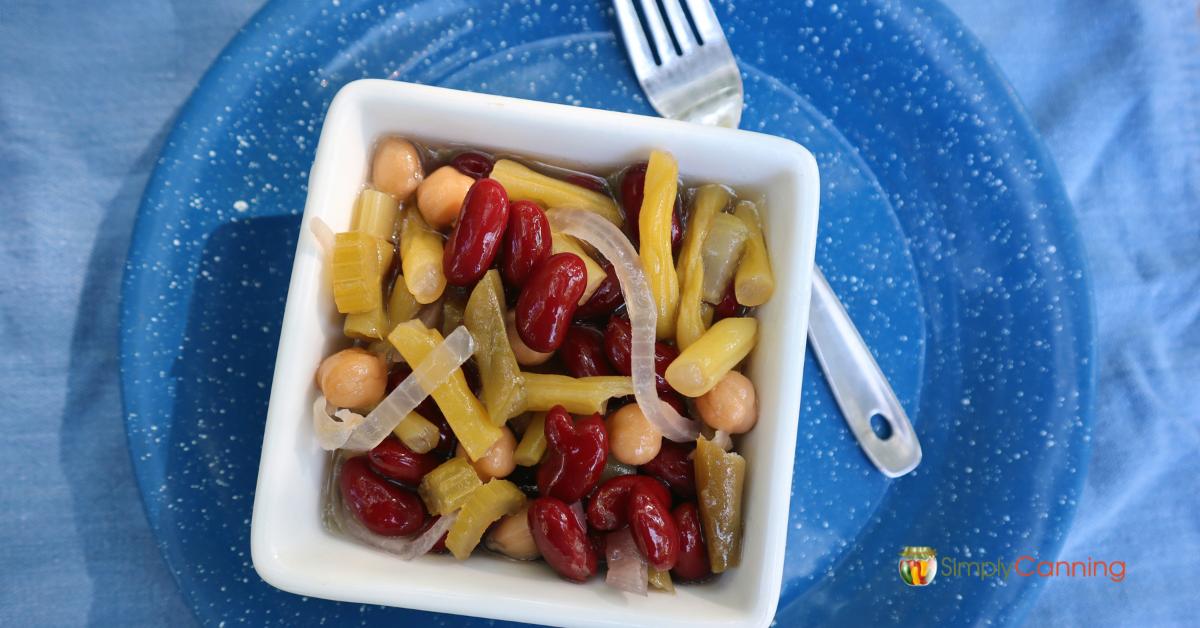
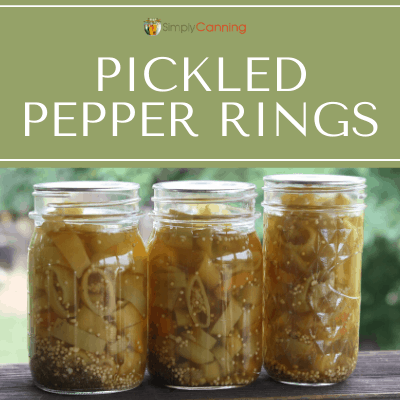
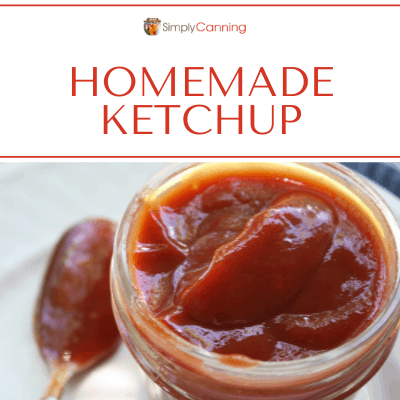
When you place the pickles in the 2 gallons of salt water the day before,are they whole or already cut in spears?
I usually can whole pickles but if you are cutting your pickles into spears they would be already cut up. Good question!
I’m surprised your recipe does not use garlic. Why? I love garlic and the flavor it gives my pickles.
Hi John. Sometimes I use garlic and sometimes I don’t. It would be fine to add a clove of garlic to each jar for this recipe. :). I’ll edit and add this to the post above. Thanks for the question.
Can you use this recipe for Pickled Green tomatoes
No, but here is a good pickled green tomatoes recipe for you.
I was just wondering. After you drain the salt water from the pickles what do you do with them. Do you put them i. The jars that are warming, wait until the brine is ready then put them in the jars just before you put the brine in or do you cook them in the brine that you are going to cook?
I wait to put mine right in the warm jars when the brine is ready. Just put the cucumbers in the warm jars, add your spices (Or you can add the spices first. It doesn’t matter), add your brine put the lids on and process.
Thank you for this recipe – first time in decades I have ever managed to make crispy dill pickles! I added a few garlic cloves, some black pepper corns and just a few red pepper flakes to each jar. The pickles have a slight bite, but are delicious. Now, I just wish I had made more.
I see here that 1 person mentioned that after she soaked the pickles in saltwater, that she RINSED them off before canning. My recipe did not say to rinse them off. Are you supposed to rinse off and then can?
No, you do not have to rinse them. Just drain.
I have 7 jars in my hot water bath and it is taking forever to come to a boil! It seems like 45 min have gone by! My jars were hot when I put them into the bath. I have even tried covering the pot. Any ideas?
My first suggestion was going to be keep the lid on the pot while you bring them to a boil. But you already did that. Maybe next time start with the water a little hotter. It shouldn’t be boiling when you add the jars but it should be very hot.
Is it possible to add a few cloves of garlic in the crunchy dill recipe?
Yes you can add one clove of garlic to each jar.
Please add a cheesecloth to the equipment u will need:)
Good catch, thanks. We just updated the page.
-Rachel (Sharon’s assistant)